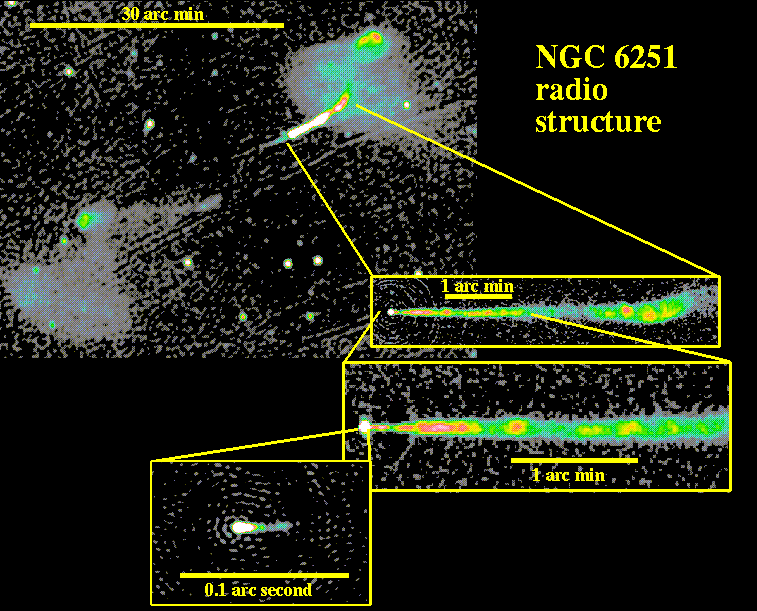
One important lesson from radio galaxies is that the central engine continues to eject material in nearly the same direction for at least several million years, based on the fact that the tiny parsec-scale jets in the core regions point in the same direction as the very extended radio structure which may stretch several million light-years (and thus took at least that many years to form). The nearby radio galaxy NGC 6251 is an excellent example. The largest structures are seen in a map made with the Westerbork Synthesis Array Telescope in the Netherlands, which can map somewhat larger objects than the VLA, working in this case at a wavelength of 49 cm. This image spans almost a full degree (56 arcminutes) east-to-west. Closing in toward the nucleus are two maps made with the VLA at 20 centimeters wavelengths, showing the extraordinary straight and narrow jet feeding toward the northwest radio lobe, spanning 308 and 188 arcseconds. Finally, the innermost core is shown in a VLBI map with a resolution of only 3 milliarcseconds (0.003 arcsecond), showing that knots are still moving outward from the nucleus in nearly the same direction. The VLA and VLBI maps have been rotated to make the jet horizontal for convenience. The WSRT map shows the faint counterjet opposite the bright jet; its weakness may indicate that the jet is in relativistic motion more or less toward us, so that Doppler boosting makes it appear dramatically brighter than its counterpart.
The Westerbork data were provided by Karl-Heinz Mack, as presented by Mack, U. Klein, C.P. O'Dea, and A.G. Willis 1997 A&AS 123,423. Rick Perley furnished the VLA data, and Dayton Jones made his 11-station VLBI image available.